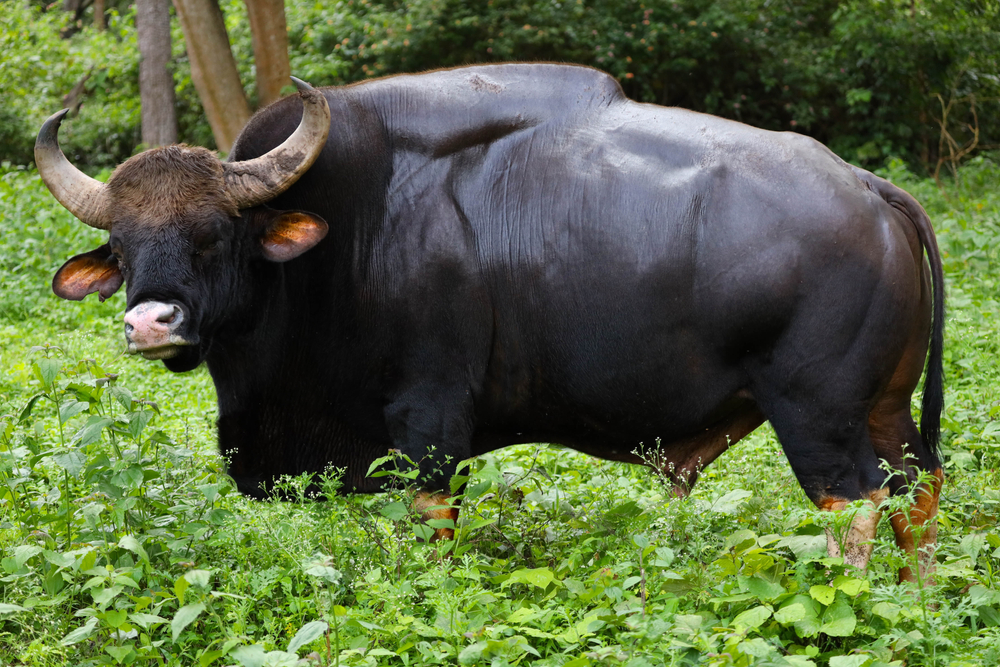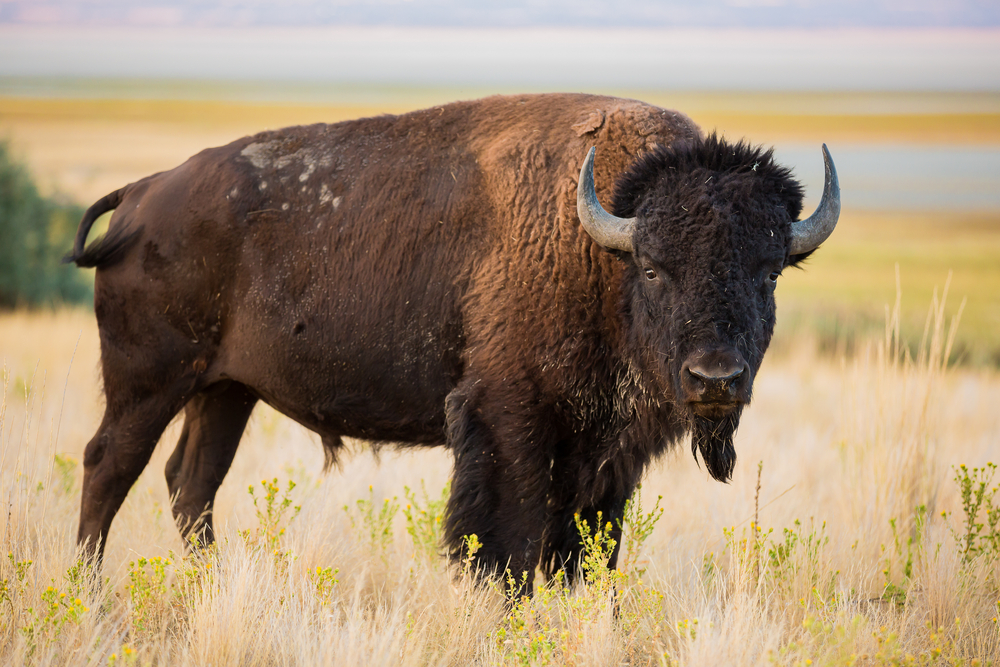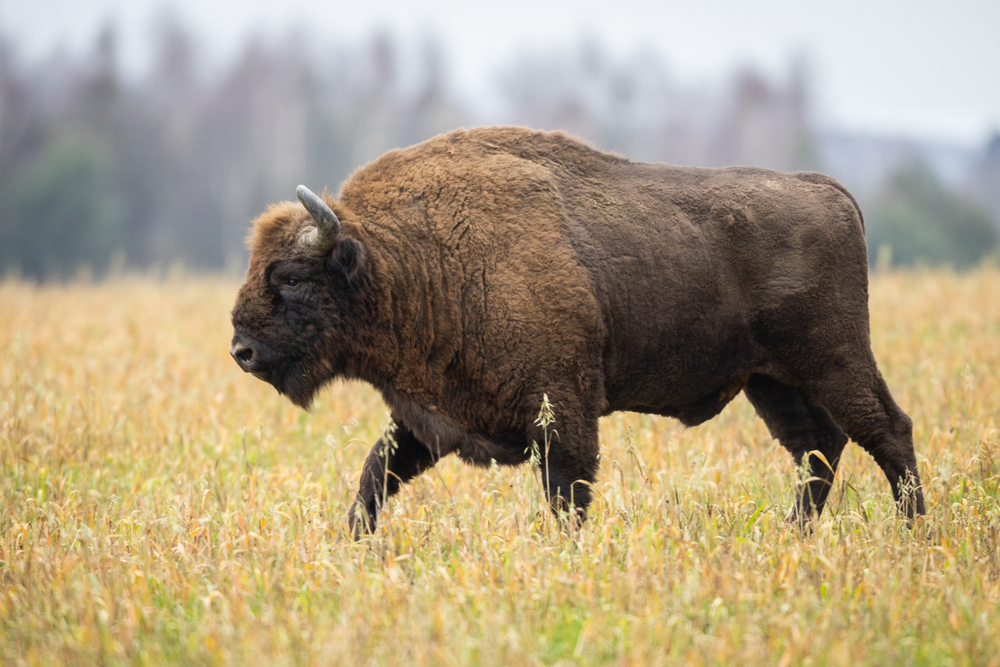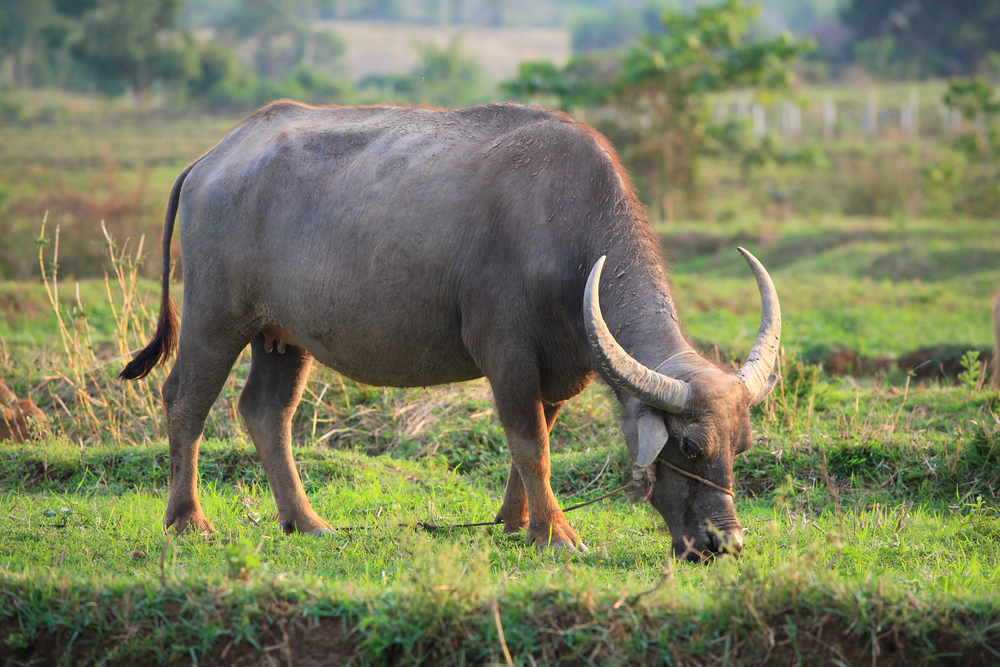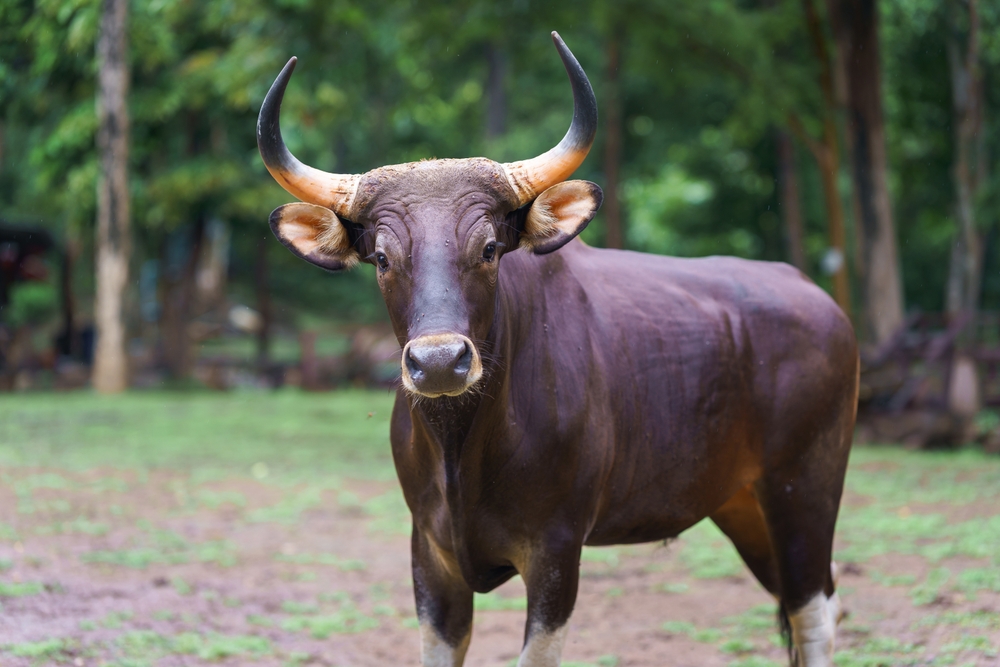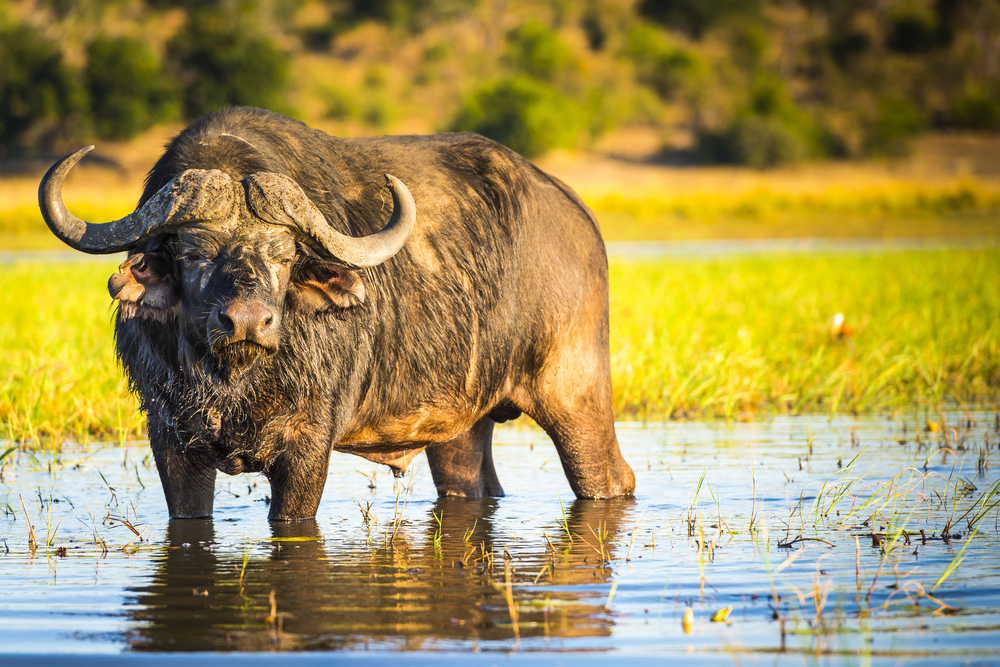Physical Characteristics
The Gaur is the largest and most powerfully built wild bovine, easily distinguished by its massive stature, domed forehead, and pale, upward-curving horns. Native to the forests and grasslands of South and Southeast Asia, it is also known as the Indian Bison and is a dominant grazer in its native ecosystems.
Size and Weight
Gaur are the tallest and heaviest of all wild cattle:
-
Adult males (bulls) typically weigh between 1,000–1,500 kg (2,200–3,300 lbs) and stand 1.7–2.2 meters (5.6–7.2 feet) at the shoulder.
-
Females (cows) are smaller, weighing 700–1,000 kg (1,540–2,200 lbs) and standing 1.4–1.7 meters (4.6–5.6 feet) tall.
Their bodies are broad, deep-chested, and heavily muscled, with a strong hump over the shoulders due to elongated spinal processes.
Coat and Coloration
The Gaur’s coat is short, glossy, and dark, with color variations based on age and sex:
-
Adult males are typically dark brown to black, while females and juveniles are lighter chestnut brown.
-
All Gaurs have distinct white or cream-colored “stockings” on their lower legs, creating a striking contrast with their darker upper bodies.
-
The muzzle, lower jaw, and eye region are usually pale, and a faint dorsal ridge may appear lighter in color.
Horns and Forehead
Both sexes possess large, thick horns:
-
Horns curve outward, then upward and inward, forming a crescent shape.
-
They are pale green or yellowish at the base, darkening toward the tips.
-
Horn length ranges from 60–115 cm (24–45 inches).
The forehead is high and broad, forming a prominent convex dome between the horns, especially in adult bulls—adding to the Gaur’s commanding appearance.
Head and Facial Features
Gaur have a broad face with a short, muscular neck, large mobile ears, and expressive dark eyes. Their muzzle is wide and moist, adapted for grazing and browsing in forested environments.
Legs and Hooves
Gaur have long, straight legs with thick bones and wide, cloven hooves that support their immense weight and allow movement through dense forests, steep hills, and muddy terrain.
Despite their size, they are remarkably agile and strong climbers, often inhabiting rugged, elevated forest landscapes.
Sexual Dimorphism
-
Males are significantly larger, darker, and more muscular than females.
-
Their horns are thicker, and the shoulder ridge is more pronounced, especially during the rutting season.
-
Older bulls often have heavily scarred hides from fights and display mud-caked flanks from wallowing.
In summary, the Gaur is an extraordinary embodiment of raw strength and forest adaptability—its size, powerful musculature, white-stockinged legs, and crescent horns making it one of the most visually impressive and ecologically important wild bovines on Earth.



































































